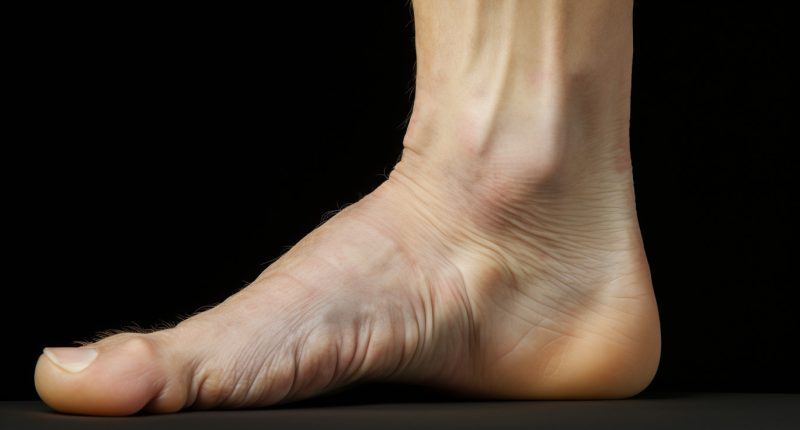Diabetic foot
What is it?
Diabetic foot is a severe complication of diabetes mellitus. It is characterized by ulcerative-necrotic damage to joints and bones, destruction of deep tissues due to impaired blood microcirculation, and infection. The condition develops against a background of destruction of nerve fibers and endings. Experts sometimes call this pathology diabetic foot syndrome.
Disease
Nutritional disorders, characterizing diabetic foot, which is associated with a deterioration in the nutrition of tissues in lower part of the foot, have been observed in almost all people suffering from type II diabetes. The longer the duration of the disease, the greater the likelihood of developing diabetic foot. Circulatory disorders of the lower limbs are observed in 90% of patients who have been ill for 20 years or more. Pathology often forces doctors to perform amputation of toes or entire foot.
Types of diabetic foot
In clinical practice, experts use several classifications of diabetic foot. The most popular option distinguishes between 3 forms of diabetic foot, depending on the development mechanism.
- Ischemic. It is associated with vascular damage, accounting for 5-10% of clinical cases.
- Neuropathic. Caused by a disorder of the nervous system of the foot, it is diagnosed in 60-75% of cases.
- Neuroischemic. A mixed form that is characterized by vascular and nervous system disorders. It develops in 20-30% of clinical cases in patients with diabetes mellitus over ten years.
According to the Wagner scale, there are six stages in the depth of ulcerative lesions:
- Zero or pre-diabetes foot. There are no external changes, but the patient has confirmed diabetes mellitus. The main task of doctors at this stage is to provide complete prevention.
- First. Infected sores appear on the skin of the lower limbs, affecting only the upper layers of tissue. At this stage, complex treatment, which does not allow the ulcers to spread to the underlying layers, is particularly important.
- Second. The ulcers deepen, involving the muscles and tendons of the foot in the process. The wound remains infected. At the same time as local treatment, general prevention of diabetes complications is carried out.
- Third. The ulcers capture all layers of tissues, even the bones, as purulent inflammatory processes develop. At this stage, serious treatment and, often, surgical intervention is necessary.
- Fourth. The infection involves bone structures in the area of the fingers beginning to gangrene, which, if left untreated, gradually spreads.
- Fifth. The gangrene covers the entire foot; the only treatment is amputation.
The Wagner classification does not consider the shape of the infection and ulcers and their origin. At the time of the study, there are a variety of pathogens: pathogenic fungi, gonococci, streptococci, Salmonella, Escherichia coli, etc.
Symptoms of diabetic foot
Signs that indicate the onset of diabetic foot development are visible and should alert you if a patient has diabetes.
- Changes the appearance of the skin. It may turn blue, turn pale, or turn reddish.
- Appearance of rash: small bubbles with transparent contents inside. It is usually formed between the fingers.
- Slowed healing process in the feet, even when discussing minor scratches.
- The bruising under the fingernails visually looking purple, bluish, or black.
- Neurological disorders in the legs: numbness, paresthesia (pathological sensations like running goose bumps, tingling, burning).
- Skin changes: thickening, flaking, dryness, abundant cracks, and hair loss in the lower third of the lower leg.
- Swelling of the legs.
Signs of diabetic foot may include pain that occurs during walking or at night, as well as increased fatigue.
Causes of diabetic foot
The development of diabetic foot is associated with prolonged excessive glucose level in the blood plasma. This condition leads to diabetic macro- and microangiopathy (generalized destruction of large and small blood vessels). As a result, blood supply to bone, muscle, and nerve tissues is significantly reduced. The legs, especially the feet, are most affected because they are furthest from the heart.
Further formation of the pathological process is associated with infection and damage to the skin of the feet. The source of infection can be any skin lesions: cracks, wounds, ingrown nails, nail fungus, or calluses. Factors such as congenital foot features, smoking, etc., increase the risk of developing diabetic foot.
Diagnosis of diabetic foot
Patients with diabetes mellitus are examined at least twice a year. In the process, the doctor must examine the feet for signs of diabetic foot. When making a diagnosis, the doctor must take into account the general neurological condition of the patient and the results of additional diagnostic tests:
- foot radiography;
- ultrasound densitometry, which determines bone density;
- positive X-ray angiography, which identifies pathological changes in blood vessels;
- peripheral computed arteriography, a minimally invasive procedure that allows you to determine the status of blood flow in the legs;
- ultrasound dopplerography of the lower extremities’ vessels, determines areas of stenosis and the degree of blood flow deterioration.
For laboratory tests, the patient is prescribed:
- biochemical blood test;
- clinical urinalysis;
- bacteriological examination of the culture from wounds and ulcers.
Specialists with a narrow profile may be involved in the diagnosis and consultation of the patient: orthopedist, vascular surgeon, phlebologist, etc.
Treatment of diabetic foot
Treatment of diabetic foot is usually conservative and surgical. The choice of therapeutic tactics depends on the study’s results and the patient’s condition.
Conservative treatment
It is used for uncomplicated pathology. The course of treatment includes several directions:
- Treatment with medicines that normalize blood sugar levels, painkillers, and antibiotics.
- Physiotherapy and the use of special bandages to speed up the healing of ulcers.
- Lifestyle correction and diet to normalize blood sugar levels.
Surgical treatment
The operation is used to treat advanced forms of diabetic foot that do not respond to conservative treatment. Depending on the situation, surgeons will perform one of the following operations:
- Opening of suppurations: ulcers, abscesses, and phlegmons are cleaned of pus, treated with antiseptic, and, if necessary, sutured, allowing drainage for some time.
- Angioplasty of the foot vessels: endovascular surgery to restore blood flow to them. It allows to eliminate most symptoms painlessly.
- Microsurgical tibial bypass surgery: performed to create a blood bypass through a blocked vessel. The procedure can even be performed on capillaries.
- Amputation (finger, whole foot, part of the shin). It is used in the most severe cases; prostheses must be implanted after this operation.
All these kinds of surgical procedures are performed in more than 250 hospitals worldwide (https://doctor.global/results/diseases/diabetic-foot). For example, diabetic foot surgery is done in 10 clinics across Germany with an approximate cost of $17.3 K (https://doctor.global/results/europe/germany/all-cities/all-specializations/procedures/diabetic-foot-surgery).
Prevention of diabetic foot
Preventive measures that allow a patient with diabetes mellitus to avoid the development of this disease are:
- following the recommendations of your doctor;
- regular screening examinations;
- compliance with rules of personal hygiene;
- wearing good quality and comfortable shoes;
- use of orthopedic insoles;
- leading an active lifestyle.
Rehabilitation services
Rehabilitation measures are individualized for each patient. They depend on the number of surgical procedures and the person being treated. The basis of rehabilitation measures is foot relief. To do this, the person must wear orthotic footwear. It is also recommended:
- to carry out an antiswelling treatment;
- to massage the limb itself or with the help of a specialist;
- to train muscle strength and endurance by doing exercises recommended by your doctor.



